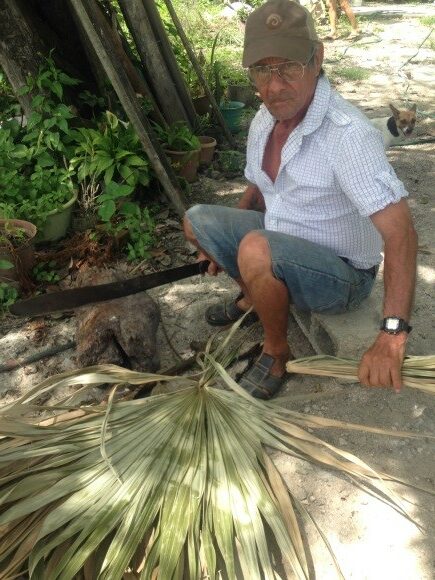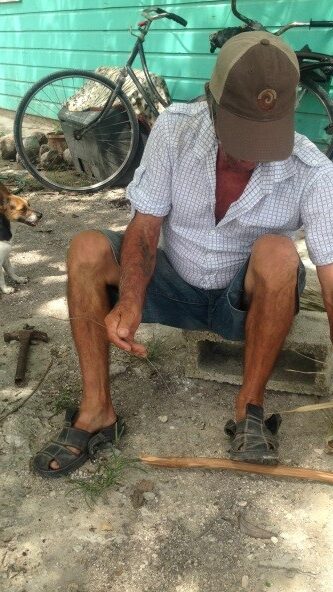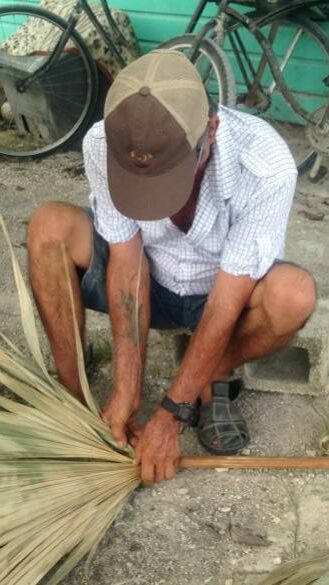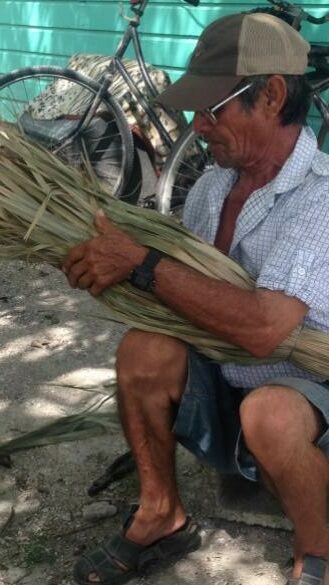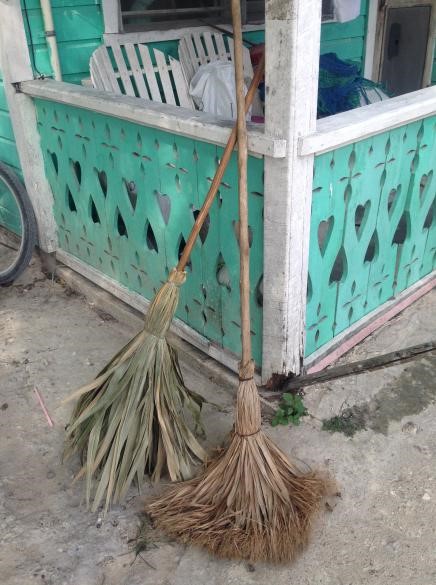Description
Prior to the availability of modern instruments, tools and household implements, natural fibers and materials were used to develop these useful implements and crafts.
The chit broom is one of the traditional brooms manufactured in Belize. Before commercial brooms were introduced causing locally made brooms to become less accessible, brooms were often made from different leaves such as straw, chit palm, and other palm leaves. The chit broom was once used by people to sweep their homes as the floor in their homes were dirt floors. Now, these locally made brooms are used mainly to maintain or sweep around the yard.
The materials used to make the chit broom are retrieved from the forest. The sourcing of these materials is an important aspect in chit broom making. The chit leaves and stick locally known as the ‘tastap’ or ‘indio desnudo’ stick are the necessary materials for the broom making process. Knowledge of lunar phases is also a key component to manufacturing the broom, as this will indicate when to cut the ‘tastap’ stick. It is believed that strict adherence to lunar phases ensures the durability and strength of the stick. The chit leaves, on the other hand, may be retrieved at any time. The tools used for chit broom making include a machete, wire, nails and pliers.
Once materials and tools have been gathered, the broom maker removes the stem of the chit leaves, and shreds the leaves until obtaining individual flat layers. Wire is measured and cut off, and the leaves are anchored to the ‘tastap’ stick using nails. The wires are then strung through the center of the chit leaves and wrapped around the ‘tastap’ stick. A wire is also used to hold the ends of the broom together, while the ends of the leaves are leveled using a machete. The completed broom is then ready for use.
Transmission and Safeguarding Practices
The practice of chit broom making is not as prevalent as in previous times. There are currently no formal safeguarding practices in place to ensure the continuity of the practice. Practitioners and broom makers are encouraged by individual purchases made by locals to continue making these brooms. However, the easy availability of commercial brooms has diminished the demand for these traditional brooms.
Continuity of Chit Broom Making
Practitioners and broom makers have been willing to share their knowledge about the craft, and have been approached by the Houses of Culture to teach workshops. The Benque House of Culture, in its annual workshop series has hosted workshops for traditional broom making, including the straw broom. A few locals continue to support the chit broom making through their continued purchases of the brooms.
Associated Cultural Forms, Traditions and Knowledge
(What other cultural forms and traditions, skills and knowledge are necessary for carrying out this practice?)
Agricultural and Environmental Knowledge
Spaces for Enactment
(What places, spaces and locations are integral to its practice?)
- Carpentry shops
- Benque House of Culture
- Private Residence
Communities and Groups Involved
- Benque Viejo del Carmen Town, Cayo District
- San Jose Succotz Village, Cayo District
Other Sources of Information
Contributors to this Article (including Belize ICH Network Members, National Institute of Culture and History Staff, and community informants who participated in the Inventorying Process): Mr. Alirio Sandoval, Alexandria Villanueva, Florencia Castillo, Linette Sabido, Selene Solis

